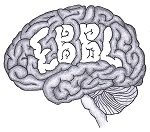Our reseach in the Emotion, Brain, & Behavior Laboratory broadly seeks to understand emotion regulation, specifically how we alter our emotions when we want to and the causes and consequences of doing so.
The Principal Investigator, Heather Urry, has worked with colleagues (Urry & Gross, 2010; Opitz, Gross, & Urry, 2012) to develop a conceptual framework (Selection, Optimization, and Compensation with Emotion Regulation; SOC-ER) within which to consider how individuals choose emotion regulation strategies and the effectiveness of those strategies in the context of changing resources. Operating within that framework, we have studied the strategies people choose to regulate their emotions and their ability (or inability) to carry out those strategies successfully in emotional contexts
Our current work focuses on identifying emotion and emotion-regulatory processes as they relate to task performance under stress. For example, we have been developing a novel route planning task with which to study the following:
- effects of time pressure (time allotted, time waiting, sense of urgency) on subjective stress and task performance
- how people forecast future emotions about performing a task
- effect of emotion regulation strategies on affective forecasting errors
- associations between interoceptive sensibility, subjective stress, and use of emotion regulation strategies during task performance
To address our research questions, we employ a range of measures. Our peripheral psychophysiology laboratory studies typically employ measures of subjective emotional experience, expressive behavior (e.g., corrugator muscle activity over the brow region), and autonomic physiology (e.g., electrodermal activity, electrocardiogram), many of which are measures that are sensitive to the dynamic nature of emotional responding. We also use pupillometry to measure changes in pupil size as a function of cognitive processes and eye tracking technology to monitor the ways in which people allocate their attention to information in the emotion-provoking stimuli we use. Our neuroimaging work uses functional magnetic resonance imaging to examine neural correlates of relevant processes.
Much of our recent work has used primarily behavioral methods and online data collection, largely due to the COVID-19 pandemic.
